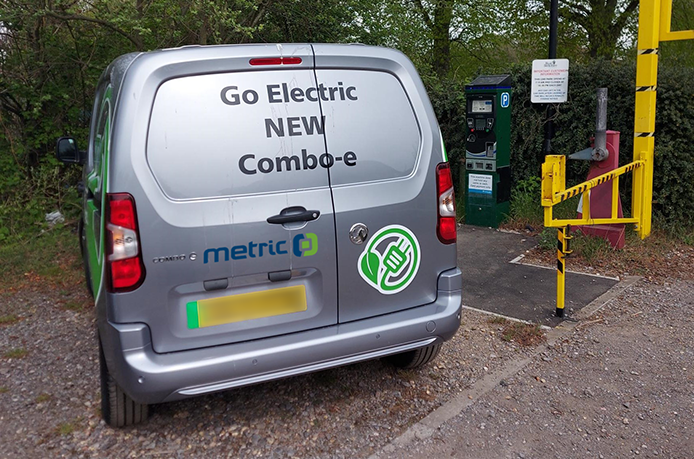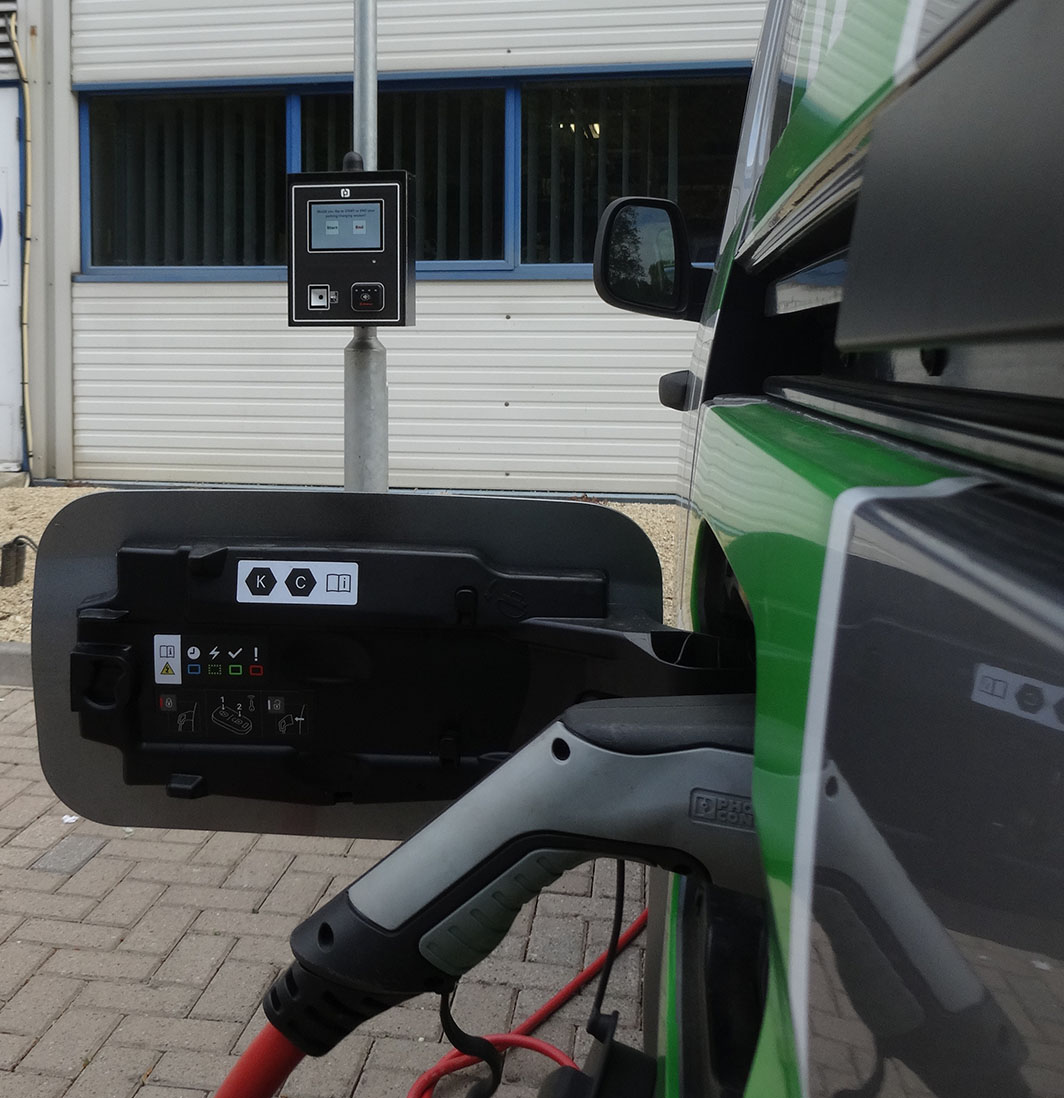We take a look at some of the issues regarding the use of Electric Vehicles for our Service and Maintenance Team, and how we are testing some of the current options.

You may know that as a provider of EV Charging Solutions, Metric are already moving to electric vehicles for staff where possible, and its those words “where possible” that highlight an ongoing issue for us, and maybe for many other service industries.
With the Sales and Management team, being an EV driver is already having a positive impact when it comes to our green credentials. Its becoming relatively easy (in most cases) for staff to ensure they have enough “juice” to make the visits required or to build in a re-charge stop during the day (making time for a coffee) either while on the road to an appointment, or on the way home. Range anxiety among our EV drivers is disappearing fast. Often the car will direct you to a nearby charge point, and it’s undeniably good for mental health to take a little break from driving, or even just to give the driver a little extra time to think about that next sales call before arriving at the appointment.
That part of the EV equation is working well and ICE cars are being replaced as leases are renewed.
However the other side of this particular coin is the Service and Maintenance team. Metric currently have 40+ maintenance staff, each with a vehicle, and each covering a varied geographic area.
As a company we are keen to make the transition to greener vehicles as soon as possible and would like to do this well ahead of the government deadline on ICE vehicles in 2030, so we have started a feasibility study to evaluate the suitability of currently available commercial electric vehicles to see which might suit our needs for the service team.
Issues worth investigating
1: Charge Capacity
Can an engineer provide a full eight hour on site work day, without having to recharge?
For EVs to work for us, in this situation, we need to ensure that our service team will be able to attend site without significant delay and be able to move from job to job, without having to build in significant recharge times.
2: Impact on Working time
What would be the predicted “down time“ required for suitable charging?
If we have to build in time for re-charging, in the day, how many working hours might be lost? and how would this affect our response times for client calls, ultimately impacting machine down time and loss of client revenue?
3: Capability
Essentially here we are talking about small vans versus large vans.
The expectation of range for an EV car is usually well documented, but the range on Commercial EV’s can vary significantly, where a key factor on vehicle range, is vehicle load. Vans are of course designed to carry more, with a larger capacity than a typical car and are physically designed to accomidate more. However, the size and weight of the batteries also has to be taken into consideration. Some smaller vans have reduced the size and capacity (and thus the range) of the batteries used, so they can maximise the load capacity in a smaller bodied vehicle. This means that our engineers may be better served using larger vans with bigger batteries.
4: Availability of Public Charging
This is of course where we have a particular interest as Metric are helping to provide that charging Infrastructure. However at the moment it is a particular consideration for the service teams, especially if an engineer is covering a wide geographic area.
If an engineer is mainly covering a city zone, they may not need to travel outside the that area and any public chargers would never be far away. If however they are covering a larger area, such as Cornwall or Scotland for example, public chargers may not be easily accessible, particularly during the tourist season when there are more visitors are in the area.
It may not be feasible for every engineer to have a charge point at home, and if they are regularly driving long distances and would they require charging on-route, would those facilities be available?

EV Service Vehicles – Our Feasibility Study
Basically, our study is investigating if adopting EV in our service model work for us, and will it generate additional resource cost due to impact on productivity caused by excessive charge downtime?
As well as the key areas mentioned above there are other factors being considered which include charge speed and battery ability to deal with all types of chargers, including rapids, and factoring in the use of heaters, satnav, trackers, charging phones and even charging drill batteries and test equipment while on route.
All of these issues and more must be considered before we are able to make some definitive choices on EVs. However, it is still our intention to have a fully electric fleet by 2025. Battery and EV technology is still progressing quickly and new developments are helping to extend vehicle range and durability all the time.
Early Indications
We are only a couple of weeks into testing at the moment, and early indications are that vehicle range is still an issue for our engineers. There are other tests to be done and we are planning additional training, ensuring drivers are using their vehicles in the most efficient way, plus education on routing and rest times etc, all of which could all have an impact.
While the current crop of commercial EV’s may not provide a solution for all of our engineers, some may be better suited to switching than others, and over the next few years we will continue to test and evaluate new solutions as they are brought to market.
We will update our findings as our testing continues.
How is it Working for You?
We would of course also welcome any input from service organisations that may already be using EVs in their service model, and we would welcome any suggestions for best practice. Please send any comments you may have to Rob Kinch – r.kinch@metricgroup.co.uk